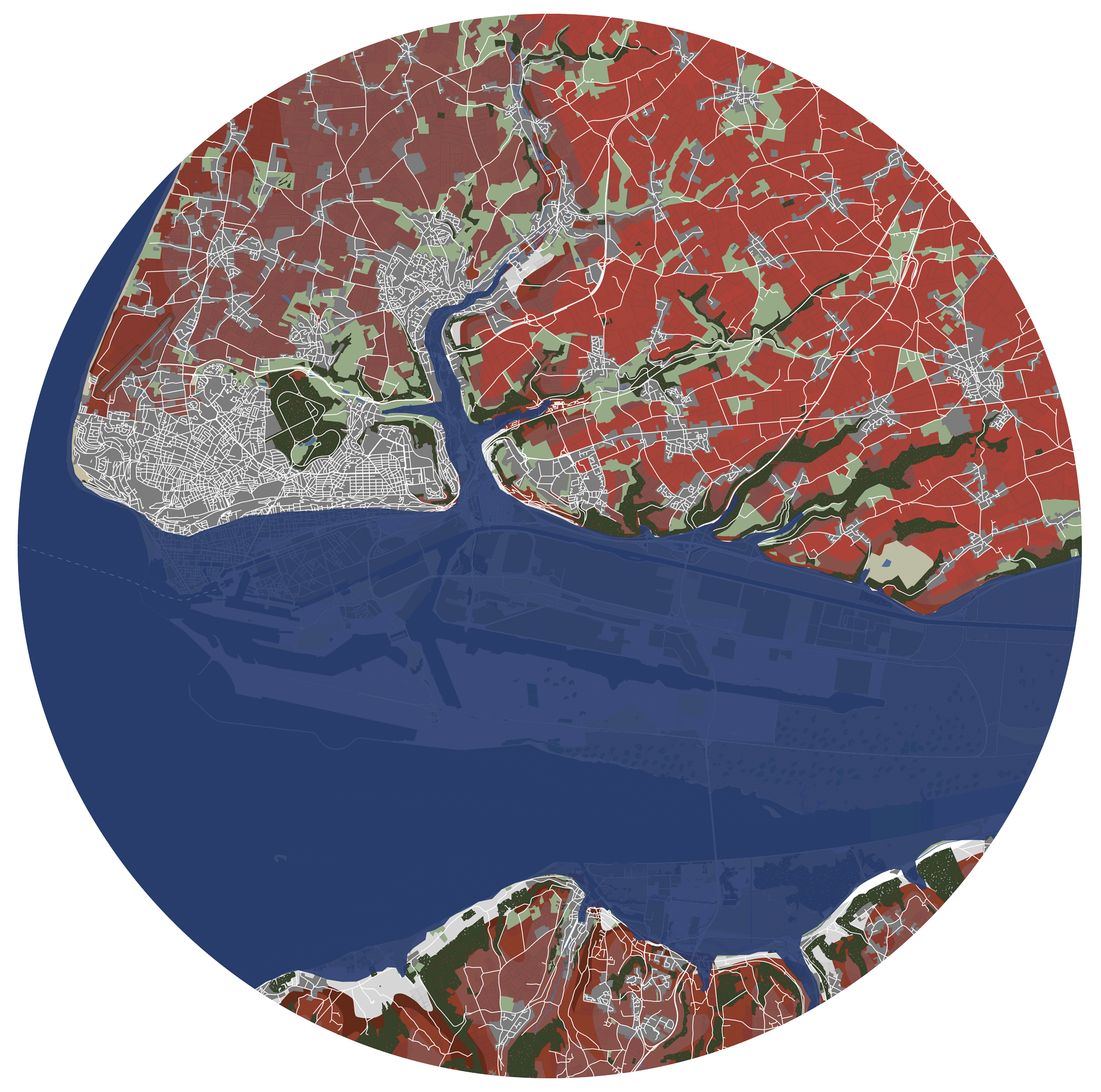Master 1
Architecture & Experience
Before the flood - A world in Le Havre
Éric Lapierre

Sites




CLIFF - HUNDRED YEARS - LOW RISE - HIGH DENSITY - 7M
Clémence Hugues





CLIFF - HUNDRED YEARS - LINEAR BUILDING - 21M
Sebastian Baumann





CLIFF - HUNDRED YEARS - VERTICAL BUILDING - 7M
Lucas Vaudoux





CLIFF - POST-COMFORT - LOW RISE - HIGH DENSITY - 14M
Loïc Castellotto





CLIFF - POST-COMFORT - VERTICAL BUILDING - 7M
Enzo d’Auria





CLIFF - DOING TOGETHER - LOW RISE - HIGH DENSITY - 21M
Laura Neumann




CLIFF - DOING TOGETHER - LINEAR BUILDING - 7M
Augustin Michel





CLIFF - DOING TOGETHER - VERTICAL BUILDING 7M -
Claire Fachetti





CITY CENTER - HUNDRED YEARS - LOW RISE - HIGH DENSITY - 7M
Shaojun Luo





CITY CENTER - HUNDRED YEARS - LINEAR BUILDING - 7M
Khadija Barkani





CITY CENTER - HUNDRED YEARS - VERTICAL BUILDING - 21M
Agathe Convert





CITY CENTER - POST-COMFORT - LOW RISE - HIGH DENSITY - 14M
Maxence Lelièvre





CITY CENTER - POST-COMFORT - VERTICAL BUILDING - 7M
Axel Eugène





CITY CENTER- DOING TOGETHER- LOW RISE - HIGH DENSITY - 21M
Flore Derouen





CITY CENTER - DOING TOGETHER - LINEAR BUILDING - 21M
Solène Frémont





CITY CENTER - DOING TOGETHER - VERTICAL BUILDING - 21M
Lucas Nény





HARBOR - HUNDRED YEARS - LOW RISE - HIGH DENSITY - 21M
Grégoire Lortie





HARBOR - HUNDRED YEARS - VERTICAL BUILDING - 21M
Marie Przopiorski de Cay





HARBOR - POST-COMFORT - LOW RISE - HIGH DENSITY - 7M
Casey Isidore





HARBOR - POST-COMFORT - LINEAR BUILDING - 21M
Gabriel Flor de Oliveira





HARBOR - POST-COMFORT - VERTICAL BUILDING - 21M
Maxence Heidet





HARBOR - DOING TOGETHER - LOW RISE - HIGH DENSITY - 7M
Bouchra Larbi Bouamrane





HARBOR - DOING TOGETHER - VERTICAL BUILDING - 7M
Kelly Chhour





SWAMP - HUNDRED YEARS - LOW RISE - HIGH DENSITY - 14M
Florian Brehin





SWAMP - HUNDRED YEARS - VERTICAL BUILDING - 14M
Angela da Silva





SWAMP - POST-COMFORT - LOW RISE - HIGH DENSITY - 14M
Célia Codjia





SWAMP - POST-COMFORT - LINEAR BUILDING - 21M
Cynthia Tréport





SWAMP - POST-COMFORT - VERTICAL BUILDING - 14M
Héléna Kocik





SWAMP - DOING TOGETHER - LOW RISE - HIGH DENSITY - 14M
Antoine Jellimann





SWAMP - DOING TOGETHER - LINEAR BUILDING - 14M
Margot Sustar





SWAMP - DOING TOGETHER - VERTICAL BUILDING - 14M
Arianna Migliarino





Architecture & Experience
Before the flood - A world in Le Havre
After having tested the hypothesis to build a world in Arc-et-Senans, Guise, Clairevivre and Firminy, we settle this year in the city of Le Havre.
We are interested in this city for many reasons and particularly for its capacity to condense several dimensions able to inform the projects. Due to its singular geographic position, at the estuary of the Seine, Le Havre is one of the most important European ports. Built at the beginning of the 16th century, the growth of the port goes alongside with the fast economic development of the city and the rise of pre-industrial brick and tile workshops. Some see this port as the entrance port to Paris, like the Piraeus for Athens. Le Havre is at the crossroad of landscapes, in-between land and see, the Seine and the Channel, clear and saltwater, giving it a special quality. Thus, the city is also imbued with the imaginary of Perret who actively participated to the post-war Reconstruction.
Nevertheless, its geographic situation is also the sword of Damocles of Le Havre. Following the most pessimist projections of the IPPC (GIEC), the average water levels could rise by one meter until 2100. This rise of water levels increases the risk of water submersions, permanent or temporary, the risk of coastal erosion, increases salt intrusions into coastal aquifer, thus increases the risk on coastal and port infrastructures. Le Havre is then on the frontline facing environmental issues that makes it a representative subject to study the question of the coastal fringe. This question is even more relevant that by the year of 2040, in France, coastal regions could gather a third of the population.
By the interest on the coastal fringe landscape, the aim of a world in Le Havre is to evaluate the consequences of such a situation on the architecture and how this situation opens a huge field of experimentation that leads us to question the definition of architecture. In other words, the question is to understand how the architectural form could be deeply redefined in relation with the environmental issues and then generate unexpected results. Environmental imbalances create a strong paradigm shift that forces us to radically think about our relations to the territory, the construction, the mobility, the uses, etc. and thus to define new balances within the architectural form. In addressing the subject of environmental issues through the means of architecture, we affirm our attachment to the definition of architecture as a knowledgeable and exploratory discipline while outlining the contours of a possible disciplinary approach of the environment in order to propose new standards of comfort.
These explorations on the definition of the architectural form and new standards echoes with the work of Perret for the Reconstruction of Le Havre. He developed the “Immeuble standard” or “Appartement modulaire” both based on the use of a constructive grid of 6,24 meter offering at once standardization of the construction and flexibility of uses in order to “inscribe city in measure, like a musical harmony”, to use his words.
| Jury | Architecture & Experience |
|---|---|
| Tristan Chadney Antoine Collet Sophie Dars (Accattone, Bruxelles, HS Düsseldorf, UL Bruxelles) Sophie Delhay (Sophie Delhay architecte, Paris, ENSA Versailles) Laurent Esmilaire Ambra Fabi Léonard Lassagne (Data architectes, Bagnolet, EAVT Paris-Est) Éric Lapierre Antoine Lebot Fosco Lucarelli Thaïs de Roquemaurel (XDGA, Bruxelles, EAVT Paris-Est) |
Tristan Chadney Antoine Collet Laurent Esmilaire Ambra Fabi Mariabruna Fabrizi Éric Lapierre Antoine Lebot Fosco Lucatelli Sébastien Marot |